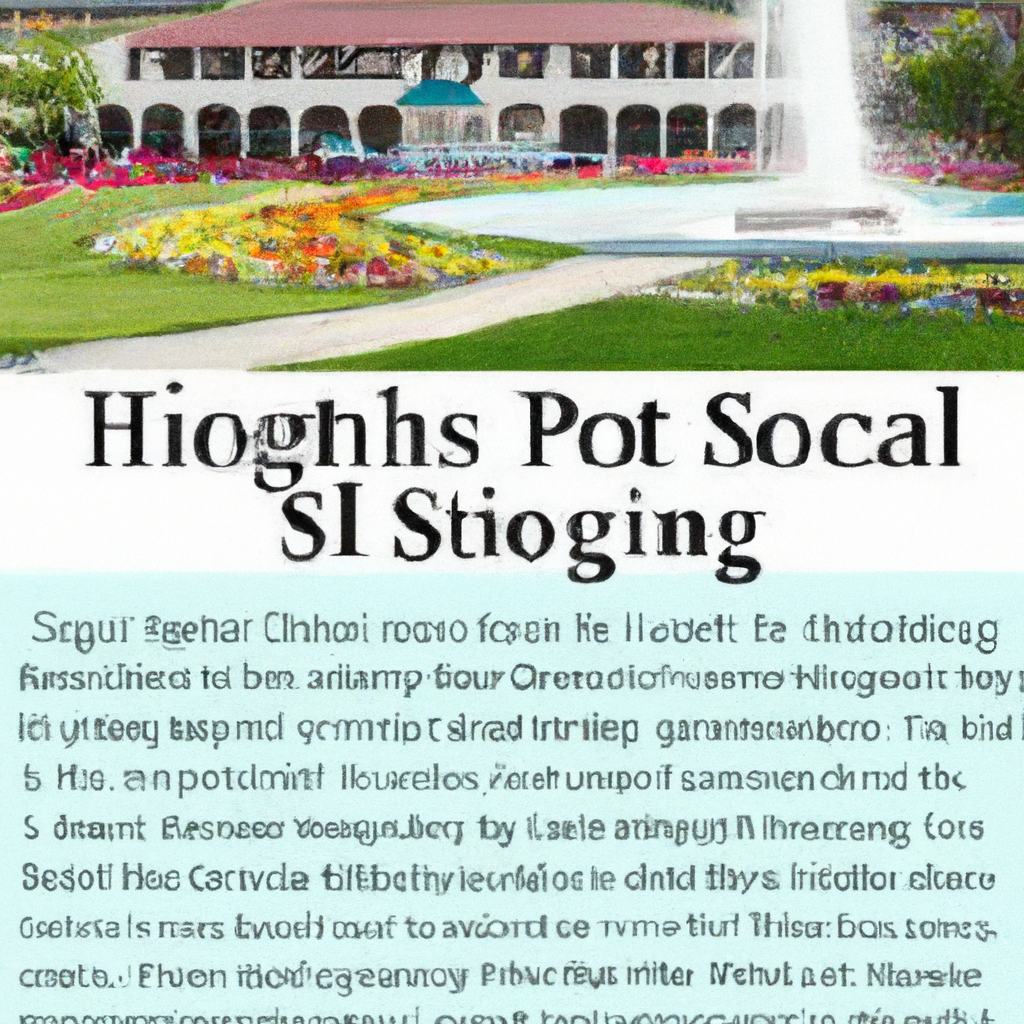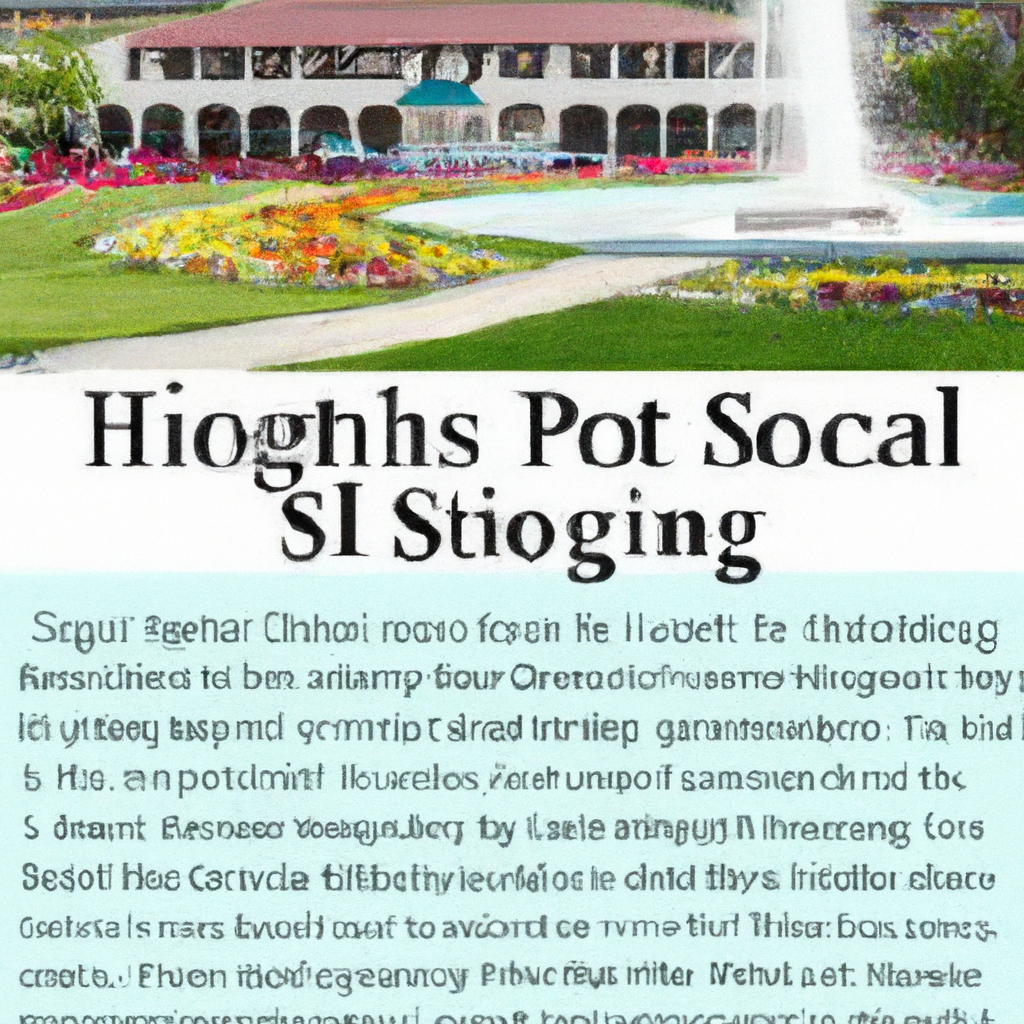Imagine stepping into a world where steam rises from pristine turquoise pools, enveloping you in a soothing embrace. This is the world of hot springs, ancient treasures that have been revered for centuries for their healing properties. In this article, we will take you on a journey through time, exploring the fascinating history of hot springs as legendary healing centers in the United States. From the indigenous tribes who first discovered their therapeutic powers to the modern wellness retreats that continue to draw visitors seeking relaxation and rejuvenation, this historical overview will uncover the evolution of hot springs as profound spaces of healing in America.
0/historical-overview-the-evolution-of-hot-springs-as-healing-centers-in-the-us.png" title="Historical Overview: The Evolution Of Hot Springs As Healing Centers In The U.S." alt="Historical Overview: The Evolution Of Hot Springs As Healing Centers In The U.S." style="max-height: 500px; max-width: 100%;" />
Introduction
Welcome to the fascinating world of hot springs! In this article, we will take you on a journey through the rich history and cultural significance of hot springs in the United States. From their early discovery and use by Native Americans to their rise in popularity during the 19th century, we will explore how these natural wonders have played a pivotal role in our society.
Native American Use of Hot Springs
Early Discovery and Use
Long before Europeans set foot on American soil, Native Americans had already discovered the therapeutic and spiritual properties of hot springs. For centuries, various tribes utilized these natural geothermal wonders for healing purposes, with rituals and ceremonies being conducted in their proximity.
Spiritual Significance
Hot springs held immense spiritual significance for Native American tribes. They were considered sacred places, believed to be imbued with the power of the earth’s energy. It was believed that these healing waters could cleanse the body, mind, and spirit, and establish a connection with the divine.
Therapeutic Properties
Beyond their spiritual significance, Native Americans also recognized the physical healing properties of hot springs. They utilized the mineral-rich waters for treating various ailments, such as joint pain, skin conditions, and digestive disorders. The therapeutic effects of these springs were passed down through generations and became an integral part of Native American healing traditions.
European Influence and Initial Exploitation
First European Encounters
When European explorers arrived in North America, they encountered hot springs for the first time. Fascinated by these natural phenomena, they documented their experiences and the potential uses of hot springs in their journals and travel accounts.
Exploration and Mapping
As exploration of the continent continued, hot springs were carefully mapped and documented. These early explorers recognized the potential economic value of these natural resources and began to exploit them for commercial purposes.
Colonial Settlements
During the colonial era, the therapeutic and recreational potential of hot springs attracted settlers to establish communities and resorts around these natural wonders. Bathhouses and inns were built to accommodate visitors seeking the healing properties of the hot springs.
Commercial Development
With the growth of colonial settlements, hot springs became commercialized. Entrepreneurs recognized the lucrative potential of these natural attractions and began marketing them as tourist destinations. The commercial development of hot springs transformed them from sacred sites into bustling centers of leisure and recreation.
Rise of Hot Springs’ Popularity in the 19th Century
The Hydrotherapy Movement
In the 19th century, there was a significant shift in medical practices towards the use of hydrotherapy, or water-based treatments. Hot springs played a central role in this movement, as physicians and patients alike sought the healing powers of these natural waters.
Sanitariums and Health Resorts
To cater to the increasing demand for hot springs therapy, numerous sanitariums and health resorts were established throughout the United States. These institutions provided a wide range of treatments, including mineral baths, mud packs, and hydrotherapy sessions, all aimed at rejuvenating the body and promoting overall wellness.
The Spa Culture
As the popularity of hot springs grew, so did the spa culture surrounding them. Opulent resorts and elegant bathhouses sprung up around hot springs, offering luxurious treatments and leisure activities to wealthy patrons seeking relaxation and rejuvenation.
Famous Hot Springs Destinations
During the 19th century, certain hot springs gained prominence as must-visit destinations. Places like Saratoga Springs in New York, Hot Springs in Arkansas, and Calistoga in California attracted visitors from all walks of life, including prominent figures such as politicians and celebrities.

Government Regulation and Protection
Emergence of the National Park System
In the late 19th century, the United States government recognized the need to protect and preserve its natural wonders, including hot springs. This led to the establishment of the National Park System, which aimed to conserve these unique environments for future generations.
Designation of Hot Springs as a Reservation
In 1832, the federal government designated the area around Hot Springs, Arkansas, as a reservation, recognizing its cultural and historical significance. This marked the first step towards the preservation of hot springs as valuable resources.
Creation of Hot Springs National Park
Following the establishment of Yellowstone National Park in 1872, Hot Springs, Arkansas, became the second national park in the United States. This designation granted it the highest level of protection, ensuring its preservation as a natural and historical treasure.
Preservation Efforts
Since the creation of Hot Springs National Park, continuous efforts have been made to preserve and protect these valuable resources. Strict regulations and guidelines have been put in place to ensure sustainable use and conservation of the hot springs and their surrounding areas.
Influence of Medical Advancements
Development of Modern Medicine
As modern medicine advanced, the focus shifted from natural therapies to pharmaceutical treatments. Hot springs therapy, once considered a mainstream medical practice, gradually lost its popularity in favor of more scientifically-backed methods.
Medical Studies on Hot Springs
However, despite the decline in popularity, medical studies on hot springs continued to be conducted. Researchers explored the chemical composition of the waters and their potential therapeutic effects, with some studies suggesting potential benefits for certain ailments.
Integration of Medical Treatments
A shift towards a more holistic approach to healthcare led to the integration of hot springs therapy within conventional medical treatments. Hot springs began to be used as adjunct therapies alongside modern medical interventions, such as physical therapy and rehabilitation programs.
Shift towards Rehabilitation
In recent years, hot springs therapy has experienced a resurgence, particularly in the field of rehabilitation. The buoyancy and warmth of the mineral-rich waters provide a unique environment for physical therapy, helping patients recover from injuries and improve mobility.
Decline and Revival of Hot Springs
Decline in Popularity
As the 20th century progressed, hot springs experienced a decline in popularity due to changing medical practices and societal trends. The rise of modern medicine and the increased accessibility of pharmaceutical treatments displaced the use of hot springs as healing centers.
Displacement by Modern Medicine
The growing reliance on modern medicine and the pharmaceutical industry further marginalized the use of hot springs as primary healthcare providers. The emphasis shifted towards quick-fix solutions and symptomatic relief, rather than holistic treatments.
Changing Tourism Trends
Moreover, changing travel preferences and tourism trends also contributed to the decline of hot springs as popular destinations. Rising interest in international travel and beach resorts led to a decrease in domestic tourism to hot springs, as people sought new experiences and exotic locales.
Revival as Wellness and Spa Destinations
In recent years, there has been a renewed interest in hot springs as wellness and spa destinations. People are seeking alternative methods of relaxation, stress relief, and natural healing. Hot springs resorts and retreats now offer a wide range of treatments and therapies to cater to this growing demand.
Cultural and Societal Impact
Architectural Influence
The architecture surrounding hot springs has left a lasting impact on the cultural landscape of the United States. Grand Victorian-style bathhouses, ornate resort buildings, and elegant pavilions still stand as architectural reminders of the popularity of hot springs in the past.
Artistic and Literary Representations
Hot springs have inspired artists and writers throughout history, becoming subjects of paintings, poems, and novels. These artistic representations capture the beauty and tranquility of these natural wonders while reflecting the cultural significance they hold.
Historical Landmarks
Hot springs that have been preserved as historical landmarks provide a window into the past. Visitors can explore the rich heritage and storied past of these places while appreciating their natural beauty.
Hot Springs in Popular Culture
Hot springs have also made their mark in popular culture, appearing in movies, television shows, and literature. This recognition in popular media further highlights the enduring fascination and allure of hot springs in our society.
Preservation and Conservation Efforts
Environmental Concerns
With the increasing awareness of environmental issues, the conservation of hot springs has become a paramount concern. Efforts are being made to minimize the environmental impact of human activities on the delicate ecosystems surrounding these natural wonders.
Protection of Water Sources
Protecting the water sources of hot springs is crucial for maintaining their integrity and therapeutic qualities. Strict regulations have been put in place to ensure the quality and sustainability of the waters and to prevent overuse or contamination.
Conservation Organizations
Numerous conservation organizations have been created to advocate for the preservation of hot springs and their surrounding environments. These organizations work to raise awareness, promote responsible recreational use, and support scientific research and preservation efforts.
Sustainable Tourism Initiatives
To balance the demand for hot springs tourism with environmental conservation, sustainable tourism initiatives have been implemented. These initiatives aim to minimize the ecological footprint of visitors while maximizing their enjoyment and appreciation of these natural wonders.
Future Outlook and Challenges
Advancements in Research and Therapy
With ongoing advancements in medical research and therapy, the potential benefits of hot springs therapy are being further explored. Future studies may reveal new applications and gain scientific validation for the therapeutic properties of hot springs.
Balancing Development and Preservation
As hot springs continue to gain popularity, there is a need to strike a balance between development and preservation. It is crucial to ensure that the growth of hot springs resorts and facilities does not compromise the natural integrity and cultural significance of these sites.
Marketing and Promotional Strategies
To attract visitors and promote hot springs as wellness destinations, effective marketing and promotional strategies are essential. Highlighting the unique features, therapeutic benefits, and cultural heritage of hot springs can help increase their visibility and ensure their sustained popularity.
Challenges in Maintaining Authenticity
Preserving the authenticity of hot springs experiences is a challenge in the face of commercialization and modernization. Striving to maintain the original spirit and character of these natural wonders while meeting the demands of a growing tourism industry is a delicate balance that needs to be maintained.
In conclusion, hot springs in the United States have a rich and diverse history, deeply rooted in Native American traditions and evolving over time with the influence of European settlers and medical advancements. Despite facing periods of decline, hot springs have experienced a revival as wellness and spa destinations, attracting visitors seeking natural healing and relaxation. Efforts to preserve and protect these valuable resources have been undertaken, recognizing their environmental and cultural significance. As we look towards the future, the challenge lies in sustaining the delicate balance between development and conservation, while maintaining the authenticity and allure that hot springs have held for centuries.
